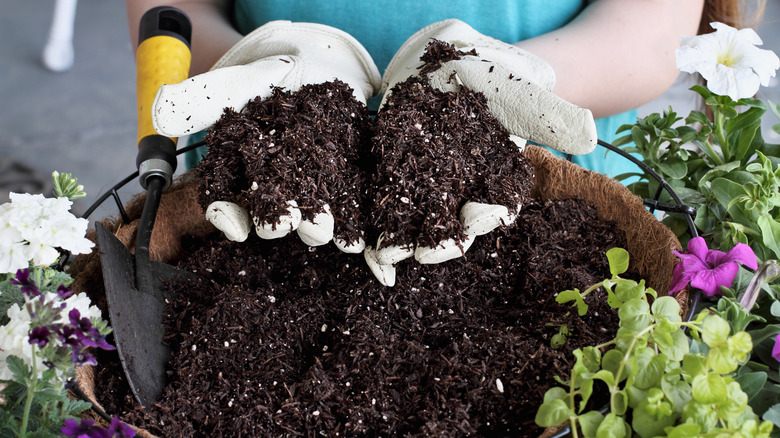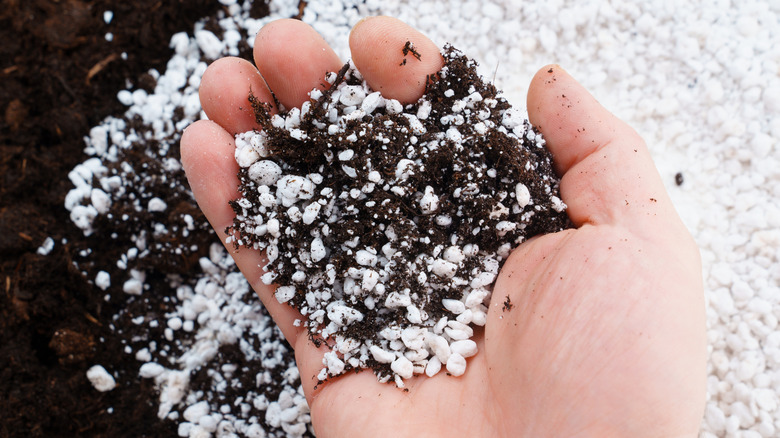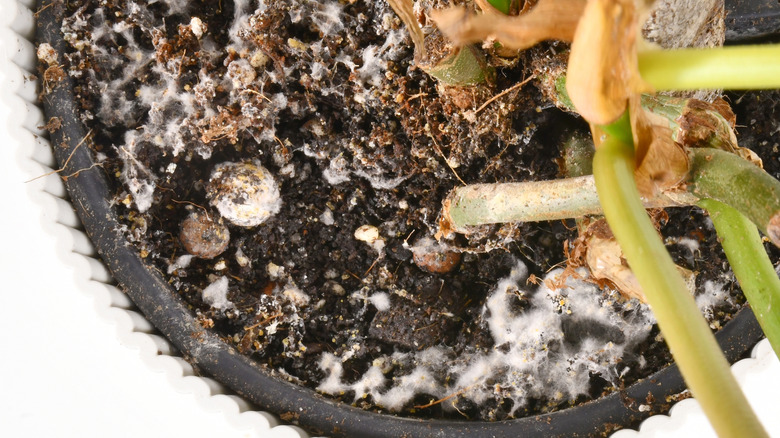What Are The Little White Specks In Potting Soil?
If you've ever leaned in for a closer look at your houseplant and spotted mysterious white balls dotting the soil, you're not alone. These tiny spheres, typically 2 to 3 millimeters across, often cause confusion, especially when they show up near the base of herbs or newly potted plants. Are they insect eggs? Fungus? Evidence you've overwatered again? Surprisingly, the answer is far more positive.
More often than not, these little white beads are slow-release fertilizer pellets. Sometimes called "prills," they're coated in resin or polymer and packed with nutrients that gradually leach into the soil over weeks or months. Nurseries and growers use them to make sure plants continue to get steady nourishment after purchase. If your plants are otherwise thriving — no yellow leaves, moldy smell, or webbing — there's typically no cause for alarm. In fact, the tiny specks' presence is a good sign of attentive care during cultivation.
Of course, fertilizer pellets aren't the only white particles you might spot in your soil. Another common sight is perlite, a volcanic glass that looks like puffed rice and boosts drainage. It's also white, but unlike prills, it's irregular in shape and texture. Like prills, perlite helps your plants grow, albeit by way of increasing soil drainage.
Fertilizer prills or perlite? Here's how to tell
Most of the white specks you see in potting soil are either slow‑release fertilizer prills or perlite. Polymer-coated urea prills are uniform, round, and encased in a plastic or sulfur coating that controls nutrient diffusion over time. Moisture penetrates the coating via micropores, allowing nutrients to seep out slowly.
Crush a prill and it won't spill slime. Instead of instant liquid leakage, the coating gradually breaks down. As the nutrient core gradually releases contents, you're avoiding nutrient spikes and burns. Perlite, in contrast, comprises volcanic glass popped at high heat and appears as chalky, irregular white bits. It adds drainage and aeration to the soil mix but holds minimal nutrients. It's porous, light, and doesn't dissolve, and is thus ideal for preventing waterlogging. If your soil's white specks are consistently round and smooth, those are likely prills. If they're jagged and feel brittle, they're almost certainly perlite.
When white specks spell trouble, and what to do about it
White specks can signal trouble when insects or fungi are involved. Fungus gnats, for instance, lay tiny yellowish-white eggs in clusters atop moist, nutrient-rich soil. Larvae emerge as creamy-white, legless maggots with shiny black heads that feed on roots in damp conditions. Heavy larval infestations can stunt growth or cause wilting. Damp soil may also host fungal mycelium or mold, which appears as fuzzy, cotton-like patches rather than firm granules. Since there are different mold types in soil, it's good to familiarize yourself with what is and isn't actual mold and whether it's harmful or not.
Of course, it's ideal to take proactive steps to prevent mold from invading your houseplants. But if you do notice clusters of white specks or fuzzy growth, check your watering routine and soil drainage. If the potting mix is waterlogged, remediate by allowing the top inch of soil to dry before watering again. Also, switch to a mix with more perlite and add a surface layer of sand or pebbles to discourage gnats. Sticky traps can catch adult gnats, while reducing moisture starves their larvae.
Bottom line: When the white bits are hard, uniform spheres, and are randomly scattered, you're probably seeing harmless prills or perlite. And if they're clustered, soft, or fuzzy? Then investigate for pests or fungus to protect your plant's health.


